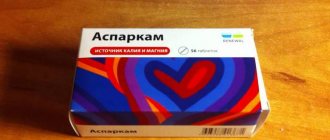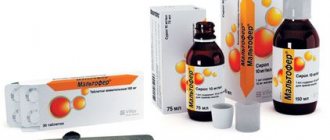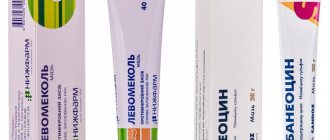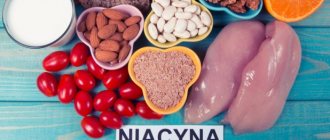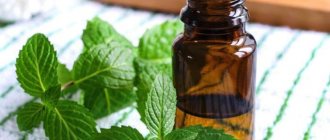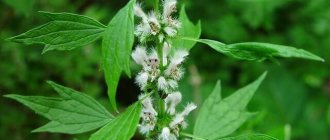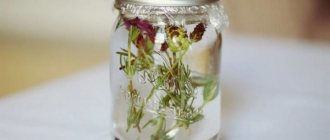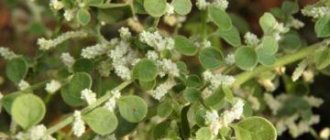The golden cap of the dandelion serves as a symbol of the sun and light, and the scattering seeds speak of change and the transience of life. At the slightest breeze, fluffy umbrellas break away from the stalk. In clear weather, the yellow dandelion rejoices in the sun along with people, but as soon as the sky frowns, it covers itself with petals, warning of bad weather and protecting its pollen from the rain. If the sun is shining, you can use it to check the time; it opens and closes at the same hours. Dandelion: medicinal properties and contraindications
Many superstitions and beliefs are associated with dandelions; talismans are still made from them. Girls braid dandelions into wreaths with the hope of family happiness, float these wreaths along the river and make a wish: whose wreath does not drown, she will be the first to get married. A love potion is brewed from dandelion roots, and dandelions are placed under children's beds to protect them from black eyes.
What are the benefits of dandelion?
The plant has anti-inflammatory, laxative, choleretic, diuretic, antipyretic, expectorant, anti-sclerotic, anthelmintic, sedative, and antitumor effects.
Infusions and decoctions are used to get rid of stones in the biliary and urinary tracts, with toxic liver damage, gastritis with reduced secretion of gastric juice.
The bitterness contained in the composition improves appetite and skin condition. Inulin is essential for diabetics. The root, flowers, and leaves stimulate milk secretion in nursing mothers.
This useful plant prevents osteoporosis and slows down tissue aging.
Dandelion is widespread and can be found on lawns, gardens, meadows, and fields. The milky juice of the plant is used for bee stings and to get rid of warts.
Healthy salads are prepared from young leaves, collected before flowering in late spring - early summer, and added to soups. A special salad variety of dandelion has been developed - its leaves have no bitterness.
Dandelion root is approximately 2cm thick and up to 60cm long. It acquires maximum medicinal properties in autumn or early spring, before the first leaves appear.
Good for liver and kidney health
When we sleep, not all organs rest with us. So, during sleep, our liver begins to work actively. As soon as we fall asleep, the main processes of cleansing our body, processing various enzymes and producing vitamins begin in this organ.
For the main laboratory of our body to function properly, we need to meet two conditions:
- Avoid large and late dinners
- Eat less fatty foods in the evening
Foods high in antioxidants provide great benefits to liver health. This is why dandelion decoction is so beneficial for the liver. Thanks to this drink, the liver does its job perfectly.
On the other hand, this decoction has diuretic properties . This means that thanks to dandelion decoction, our kidneys begin to more efficiently remove excess salts and fluids along with urine.
A decoction of this plant protects the urinary tract from the proliferation of microbes, and also regulates the balance of sodium and potassium in the body.
Plant composition
The juice, roots, leaves, and flowers of dandelion contain a lot of biologically active substances. First of all, vitamins A, B1, B2. The combined action of rutin (vitamin P) and ascorbic acid (vitamin C) reduces the permeability and fragility of capillaries.
Microelements are represented by manganese, iron, calcium, phosphorus. The plant contains tannins, phytoncides, fatty oils, mucus, and organic resins.
Dandelion roots contain glycerides of oleic, palmetic, and cerotic acids. By autumn, up to 40% of inulin accumulates. In spring its content is only 2%.
It contains sucrose (up to 20%), proteins (15%), carotene, tannins, organic acids. The roots are capable of accumulating copper, zinc, and selenium.
Fights inflammatory processes
Dandelion contains fatty acids, antioxidants (such as beta-carotene), vitamin C, potassium, iron, calcium, magnesium, zinc, phosphorus and vitamin D.
Thanks to this incredible cocktail of nutrients, it becomes easier for our body to fight the inflammatory processes that accompany diseases such as arthrosis and arthritis .
If your hands go numb at night, your legs cramp, or you have pain in your joints , don’t hesitate: try drinking dandelion infusion every day before going to bed.
Harvesting dandelion leaves and roots
Dandelion leaves are collected at the beginning of flowering or at the end of summer. The maximum medicinal properties are acquired after the birth of the new month, before sunrise.
The leaves are sorted out, yellowed and wilted ones are removed. Dry in the shade in a well-ventilated area until the milky juice stops secreting. If desired, the dried leaves can be ground in a coffee grinder. Store in a sealed glass container for up to two years.
Dandelion roots are harvested in early spring (before the leaves appear) or autumn. The best time is at sunset in mid-September, when the month is at its worst.
The roots are dug up, the thin side roots are cut off, washed in cold water, and dried in a well-ventilated area. When the milky juice stops secreting, they are cut into pieces of 3-5 mm and dried. The finished product is light or dark brown in color, odorless, and bitter in taste. It is stored for up to five years.
Morphological description
The vertical branched root is up to 0.6 m long, thickened to 20 mm in diameter, has a brown color on the outside, and a white core on the inside. Dandelion leaves have a pinnately dissected oblong shape, collected in a basal rosette.
A cylindrical peduncle with a hollow middle ends in a single round basket 20-50 mm in diameter. Dandelion flowers are ligulate, collected in inflorescences and have a rich yellow color.
The fruit is a pubescent seed. The seeds are scattered over long distances using umbrellas.
The plant contains thick milk - juice, which is rich in all parts.
The flowering period occurs in April-May, as well as at the beginning of summer. It bears fruit for a long time, from the beginning of summer and actually until mid-autumn - about 200 seeds are obtained from one yellow flower.
Uses of dandelion
The medicinal properties of the plant are used in the form of infusions, tinctures, decoctions, oils, juices, and fresh in salads.
Infusion:
- Brew 1 tsp. dried dandelion roots (or 2 tablespoons of dried leaves, flowers) with a glass of boiling water, leave for two hours, strain.
The infusion helps with metabolic disorders (skin rashes, acne), as well as with gout, rheumatism, anemia. Used as an antitoxic agent for insect and snake bites, and diseases of the thyroid gland.
Decoction:
- Brew 1 tsp. dried leaves and flowers or 1 tsp. roots with a glass of boiling water, simmer in a water bath for 5 minutes, let cool, strain.
Take 2 tbsp. before meals for liver disease, gall bladder, cholelithiasis, gastritis with low acidity, constipation, to improve digestion, stimulate appetite.
Vodka tincture:
- Pour 100g of flowers with half a liter of vodka.
- Leave for two months in a dark place, strain.
Alcohol tincture:
- Pour 1 tbsp. crushed dandelion leaves and roots 100 ml alcohol 70% strength.
- Leave for a week in a cool, dark place in a sealed container, shake every day.
- Upon completion, remove the plant material and strain the finished product.
Use tinctures at the first sign of a cold - rub your temples, the bridge of your nose. Cover your head with a cotton or woolen scarf, preferably at night. Take 10-20 drops orally in 1/2 glass of water 2-3 times a day for liver diseases, as a choleretic agent.
Oil:
- Pour dried leaves and flowers with 3 parts vegetable oil.
- Leave for 7-10 days in a cool, dark place, strain.
Use to treat inflammation of the mucous membranes.
The healing properties of dandelion are also used in the form of tea and syrup.
Tea:
- Brew 1 tsp. crushed roots with a glass of boiling water, leave for 20 minutes.
Take 1/4 cup 15-20 minutes before meals.
Syrup:
- Collect fresh dandelion flowers early in the morning in a glass bowl.
- Sprinkle each layer with granulated sugar, tamp lightly, add a little water.
- Keep the jar in a dark place for 3-4 days to obtain a brown thick liquid that tastes good.
Take 1 tsp. twice a day, add to drinks and desserts. Use flowers with honey.
The remedy is used for insomnia, loss of strength, depression, to improve memory, and increase performance. Keep refrigerated.
Reviews
Feodor, 35 years old, Klin
I would like to warn the curious from drinking unlimited amounts of coffee made from roasted dandelion roots. Once at the dacha, having heard a lot of advice about vitamin-rich dandelion coffee, I fried dandelion roots dug up in my own yard in a dry frying pan. The smell and taste of the coffee was almost like the real thing. But after a while I realized that I was becoming drunk, although my coordination was not impaired at all. But the headaches were severe. It is impossible not to know the limits in anything!
Boris, 52 years old, Pskov
I will say that thanks to dandelions you can increase male strength, this is not very far from the truth. First of all, after drinking dandelion tea, your well-being and mood improve, and it’s not far from improving your potency.
Alisa, 46 years old, Yaroslavl
Freshly ground dandelion leaves and pipes make good whitening face masks. Dandelion pulp should be mixed with sour milk and left for 15-20 minutes on areas where there is skin pigmentation. After 3-4 such procedures, the result will become noticeable. Skin color will even out.
Dandelions in spring and autumn become not just beautiful flowers, but a cure for many diseases. The main requirement is that in order for this medicine not to turn into poison, the places from which the flowers will be picked must be free of human waste. Therefore, it is important that a person always remembers that it is necessary to take into account not only his own desires and needs, but also nature.
Health to you and your loved ones! Natalya Belokopytova.
Medicinal properties of dandelion juice
The juice from dandelion leaves is prepared before flowering, in the first half of June. From July to early autumn, the healing properties are reduced.
- Wash the grass and leaves with cold water, chop, place in a colander and scald.
- Grind in a meat grinder, strain through a thick cloth.
- Add the same volume of water and boil for 2-3 minutes.
To eliminate bitterness, place washed leaves of young dandelions in a solution of table salt (3 tablespoons per liter of water) for half an hour, and rinse again when finished.
Take 1 tbsp for 2-3 weeks or throughout spring-summer. 20 minutes before meals, with honey. Store in the refrigerator for 2-3 days, then prepare new juice.
The healing properties of dandelion juice are due to the high content of potassium, calcium, sodium, magnesium, and iron.
In particular, only fresh plants contain organic magnesium. The body does not absorb inorganic compounds and accumulates them.
Some people add an equal amount of vodka to the juice or one part of alcohol to two parts of juice.
The juice neutralizes high acidity and is used as a choleretic to normalize the activity of the pancreas. Has a mild laxative effect and helps with insomnia.
Fresh juice relieves joint pain due to gout and lowers cholesterol levels. It is used for diseases of the liver and gall bladder. Pairs well with other vegetable juices.
For cosmetic purposes, the juice is used to whiten the skin, get rid of freckles, age spots, and warts.
Lubricate insect bites:
- Apply fresh juice to the bite 3 times a day or more often.
- Let dry, rinse with water.
Strengthens the immune system while you sleep
According to the results of many studies, one of the main properties of dandelion is to strengthen the human immune system . This is what causes its bitter taste.
Dandelion not only cleanses our body, but also contains a large amount of vitamins, minerals and other nutrients. This allows us to effectively cleanse our body of toxins .
As a result, our body's defenses increase, and our immunity becomes stronger.
Perhaps a cup of dandelion tea before bed will become one of your favorite habits. It will allow you to end your day in peace.
It must be remembered that dandelion is not recommended for pregnant women, as well as people with gallbladder problems and kidney stones.
Dandelion salad recipes
Young leaves of the plant are consumed in the form of salads. They don't taste bitter, especially if you remove the center stem.
Recipe 1:
- In a separate bowl, mix vinegar, vegetable oil, salt.
- Mix everything with chopped dandelion greens, parsley, and onion.
Recipe 2:
- Mix chopped dandelion grass (leaves) with garlic, crushed with salt.
- Add vinegar, a little vegetable.
Recipe 3:
- Finely chop the leaves and mix with walnuts.
- Add 1 tbsp. honey or vegetable oil.
Dangerous properties and contraindications
Possible harm from concurrent use of medications and dandelion:
- Antacid drugs. The plant triggers the process of more active removal of stomach acid, so antacids may not bring any results;
- Blood thinners. If you take these drugs in parallel with dandelion medications, the likelihood of bleeding increases;
- Lithium, used for mental disorders. Dandelion may reduce its effectiveness;
- Diuretics when taken simultaneously with dandelion can lead to electrolyte imbalance in the body;
- Medicines for diabetics, when taken in parallel with a plant that can lower the amount of sugar in the blood, can cause a significant increase in the level and hypoglycemia;
- Dandelion milk juice can lead to allergic reactions on the skin in the form of rashes and itching.
You need to add plant greens to dishes gradually and in small quantities and monitor the body’s reaction. Dandelion should be given to young children with extreme caution.
Dandelion jam recipes
Recipe 1:
- Pour yellow dandelion flower petals (400 pcs) into 1 liter of water, add pre-cut lemon with peel into 4 parts.
- Cook for 90 minutes, let cool, strain, squeeze out the vegetable mass, it is no longer needed (throw away).
- Finely chop the boiled lemon, add 1 kg of sugar.
- Boil until the consistency of liquid honey.
Recipe 2:
- Separate the stem from the flowers (360 pcs.), pour in 2 cups of cold water, boil for 2 minutes.
- Place four layers of gauze in a colander, drain the water into a saucepan, and squeeze out the vegetable mass.
- Add 7 cups of sugar to the water, put the pan on the fire and stir until the sugar is completely dissolved.
- Boil for seven minutes from the point of boiling.
How to prepare a tincture with alcohol and vodka from dandelion flowers
Fill the container 3/4 full with freshly picked inflorescences, then fill it with alcohol or vodka and leave for 3 weeks in a place where the sun's rays do not penetrate.
You need to shake constantly. Strain the finished composition and you can start taking it.
For what diseases is it used?
Alcohol compositions on flowers help:
- Relieves fever, facilitates mucus discharge;
- Increase appetite, improve metabolism;
- Increase bile secretion, cause a laxative effect;
- Remove waste and toxins, cope with allergic reactions;
- Have a sedative effect;
- Improve the condition of anemia, hypovitaminosis, spleen diseases;
- Cope with skin ailments.
coffee drink
Recipe 1:
- Fry dried dandelion roots until light brown.
Brew at the rate of 1 tsp. per glass of boiling water.
The drink will replace coffee for those suffering from hypertension, liver and kidney diseases.
These medicinal properties of dandelion roots are used to cleanse the lymph:
Recipe 2:
- Leave overnight in a thermos in 500 ml of boiling water 1 tsp. root powder.
Take 1 glass three times a day for a week.
Nine popular cooking methods
This simple and familiar flower is one of the most used not only in the treatment of various ailments, but also in food, as part of a wide variety of dishes and drinks.
There are a great many ancient dandelion recipes that are still popular today and are complemented by modern ingredients.
Method 1
Dandelion tea is a popular and beloved drink by many. It is prepared from any parts of the plant, depending on how you are going to use it. Even if you just want to enjoy its taste, you still cannot avoid the benefits.
Simple freshly picked flowers in the amount of a tablespoon, brewed with a glass of boiling water, not only have a delicate taste and aroma, but also perfectly tone and strengthen the immune system. This tea is very good with honey and mint.
Method 2
Dandelion roots make excellent coffee. Our grandmothers and great-grandmothers knew how beneficial such a drink is, because the recipe is quite ancient. This is how I recommend making coffee. The dug up and washed roots need to be dried in the oven or fried in a frying pan until brown.
Then grind them in a coffee grinder or, as in the old days, grind them in a mortar and brew them like regular coffee. The result is an invigorating vitamin drink without caffeine or bitterness. I like to add cinnamon, it imbues the coffee with a special oriental aroma.
Method 3
Who would have thought that you could even make kvass from dandelions? This drink is in particular demand in the summer because it perfectly refreshes and tones. To prepare it, you need to collect two liter jars of inflorescences, put them in a saucepan and pour three liters of boiling water.
Leave for a day covered, then strain and pour into one and a half liter bottles at the rate of a glass of liquid plus 5 tablespoons of sugar and a pinch of dry yeast for each bottle. Add cold filtered water, leaving some space in the bottles, close the lids and shake.
Next, you should open the bottles again, squeeze them to let the air out, and screw the caps back on. During the fermentation process, which takes 5 days, carbon dioxide will be released, which will straighten the crumpled bottles. The finished homemade drink sizzles just like the factory-made one, but does not contain preservatives or harmful additives.
Method 4
Lovers of natural homemade wines can make their own dandelion wine. Experienced housewives willingly share recipes for this drink and note that it tastes like champagne. The composition usually contains:
- dandelion inflorescences;
- sugar;
- water;
- lemon;
- raisin.
Sometimes mint is added to give the wine a refreshing taste. It should be especially noted that in the process of preparing any drinks from this flower, it is necessary to exclude the ingress of milk, which is contained in all parts of the plant. It is bitter and can spoil the taste of the finished drink.
Method 5
Smoothies made from fresh herbs - this is where there is room for culinary imagination. These drinks are not only refreshing in the summer, but also help you lose weight. Perhaps every woman knows how to cook them.
Their main advantage is that by mixing simple, accessible ingredients, you can achieve an exquisite taste and at the same time a healing effect. For example, young dandelion leaves go well with apples, bananas, mint and nettles.
Method 6
Syrup from dandelion flowers is not inferior in taste to bee honey. It is great for sweet baked goods and can also replace sugar or honey in desserts. It can be prepared either hot, by boiling fresh inflorescences with sugar and water to the desired thickness, or without heat, by laying the petals in layers sprinkled with sugar and leaving for about two weeks.
Method 7
Dandelion jam is another favorite folk dessert. There are a lot of options for preparing it, and you can choose any one to suit your taste. The main thing is that all of them will be useful for both adults and children. Lemon is often added to recipes for dandelion petal jam, which enhances the healing properties of this delicacy and gives it a pleasant sourness.
Very often this product is called honey for its amber color and thick consistency. In my opinion, this is not important, since its wonderful taste does not change.
Method 8
Juice can be extracted from young leaves. To prevent the drink from becoming bitter, the leaves must first be soaked for half an hour in salt water. Then rinse, grind in a blender or meat grinder and squeeze the resulting pulp through cheesecloth. I recommend diluting this drink with carrot juice - it improves the taste and multiplies the benefits.
Method 9
Very often, dandelion leaves are added to various salads, as they go well with other herbs, fresh vegetables, vegetable oil or sour cream.
One of the popular options for this salad is fresh cucumbers, boiled eggs, green onions, dill and dandelion leaves. Worth a try!
Treatment of heart and vascular diseases with dandelion
Hypertension:
- Brew 1-2 tsp. chopped leaves or roots with a glass of boiling water, simmer over low heat for 10 minutes, strain.
Take 1 tbsp. three times a day.
Recovery after heart attack, stroke.
Recipe 1:
- Prepare dandelion juice (see above).
Take 50 ml 20 minutes before meals twice a day.
Recipe 2:
- Brew 1 tsp. dried leaves with a glass of boiling water, leave for two hours, strain.
Take up to a quarter glass three times a day before meals.
Recipe 3:
- Grind the dried root into powder.
Hold half a teaspoon in your mouth for a while and take a sip of water. Take three times a day before meals.
Atherosclerosis.
Recipe 1. To lower cholesterol levels:
- Take 1 tbsp. crushed dandelion root powder shortly before meals.
After six months there is improvement.
Recipe 2. For the treatment and prevention of atherosclerosis:
- Take dandelion juice, gradually increase consumption from 1 tbsp. per day up to a glass.
- Then reduce the rate, return to the original one.
Phlebeurysm:
- Brew 500 ml boiling water 1 tsp. dandelion roots, simmer over low heat for 10 minutes, leave for 10 minutes, strain.
Take 2/3 cup 2-3 times a day.
Dandelion officinalis - botanical description of the plant
Since ancient times, dandelion was considered a miraculous plant and was actively used for medicinal purposes. Healers advised using freshly squeezed juice to treat eye diseases, freckles and skin pigmentation. And the famous Avicenna used dandelion juice to treat swelling that was caused by congestion in the portal vein. This remedy was also used as an antidote for scorpion stings.
Dandelion (Taraxacum officinale) in the botanical classification belongs to the Asteraceae family. In total, there are about seventy prefabricated (general) and about a thousand small varieties. About two hundred species of dandelion grow in our country.
The medicinal plant is a herbaceous perennial, up to half a meter high. It is distinguished by a shortened and fleshy tap root, resembling a spindle in shape. Its length is approximately 50 cm, it is brownish on the outside and white on the inside.
The leaves are oblong, resembling a lancet with teeth along the edges. The length of this part of the plant is about 20 centimeters. The inflorescence is basket-type, three to five centimeters in diameter, golden in color. In central Russia, the plant blooms en masse in early May.
The fruits are familiar to everyone, yes, yes, these are the same small seeds, equipped with an additional device in the form of a “parachute” for better distribution. The entire plant, especially the stem, is rich in a whitish liquid - milky sap.
Dandelion is a herb that is found everywhere. It can be found in meadows and mountain slopes, in semi-desert areas and river banks. It grows throughout the entire territory of the former USSR. In our country it can be found in all regions, except, perhaps, the Far North.
In Western Europe, America and Japan, a plant with sunny flowers is grown as a garden crop. In France, breeders even developed several varieties specifically for lovers of fresh salads.
Treatment of joint diseases with dandelion
Salt deposits, gout:
- Collect dandelion flowers in May and fill a dark glass jar.
- Pour vodka and leave for two weeks in a cool place.
Rub the joints with tincture and gruel at night, cover with a woolen scarf.
Arthrosis. Dandelion roots have the healing property of restoring cartilage tissue and dissolving salts:
- Brew at the rate of 1 tbsp. dried roots in a glass of boiling water, leave for half an hour, strain.
Take 1 tbsp - 1/3 cup three times a day half an hour before meals.
Why drink dandelion tea before bed?
Not all of us know that dandelion decoction has healing properties. For most people, dandelion is a weed that can take over any space, including sidewalks.
You can look at all this from a completely different perspective: the ability of dandelion to reproduce quickly and its survival in difficult conditions speaks to the natural strength of this plant .
The use of dandelion for the liver, with pancreatitis
Improved appetite, constipation.
Recipe 1:
- Brew 2-3 tbsp. dandelion root powder with a liter of boiling water, simmer over low heat for 20 minutes, let cool, strain.
Take half a glass warm before meals three times a day.
Recipe 2:
- Leave 1 tbsp overnight. root powder in a glass of cold water.
Take 1/4 cup during the day before meals.
Improved digestion. Use the leaves in salads. Recipes for their preparation are given in the corresponding section (see above).
Cholecystitis . The bitterness of the plant has a choleretic effect. The decoction recipe helps with gastritis with low acidity, diseases of the pancreas, stimulates the release of insulin:
- Brew 3 tbsp. dandelion root powder 500 ml boiling water, simmer over low heat for 20 minutes, strain.
Take 1/2 cup half an hour before meals, twice a day.
Cholelithiasis.
Recipe 1:
- Mix 1 part root powder and 10 parts dandelion grass, brew 2 tbsp. a glass of boiling water.
Take 1/4 cup before meals 4 times a day.
Recipe 2:
- Take 2 tbsp every day. fresh dandelion juice (see recipe above).
Liver diseases:
- Prepare syrup (see recipe in the section above).
Take 1 tbsp. three times a day half an hour before meals for a week. After a 14-day break, repeat the course.
Pancreatitis, abdominal pain:
- Brew 1 tsp. dried dandelion leaves and roots, 500 ml of cold boiled water, leave for 10-12 hours.
Take 1/4 cup before meals 4-6 times a day.
Helps relieve constipation
As a rule, people with well-functioning intestines feel the urge to go to the toilet in the morning. This habit makes it easy to start a new day.
To do this, you need to take natural remedies that stimulate intestinal motility at night. One of them is dandelion decoction.
Dandelion is a rich source of dietary fiber, making it used to treat a variety of digestive diseases.
In addition, dandelion soothes stomach pain and prevents the formation of gases .
Thanks to this, your sleep will be calm and easy, and you will be able to easily go to the toilet when you wake up.
Benefits of dandelion in treating diabetes
Salads made from the leaves of the plant are rich in inulin. They are useful to use with parsley, dill, tops, radishes or young turnips.
Recipes for diabetes.
Recipe 1:
- Brew 1 tsp. finely chopped, washed roots with a glass of boiling water, leave for 20 minutes, strain.
Take 1/4 cup 3-4 times a day.
Recipe 2:
- Brew 1 tsp. chopped dandelion root and 3 tsp. mint leaves with a glass of boiling water, simmer over low heat for 5 minutes, cover, let cool, strain.
Take 1/4 cup 2-3 times a day before meals.
Nine medical facts
Fact 1
For women, dandelion is something of a panacea for many female ailments, and it also helps to look great:
- tea made from crushed roots with honey stimulates lactation in nursing women and saturates breast milk with essential amino acids;
- an infusion of the roots also helps to cope well with the unpleasant symptoms of cystitis, relieving inflammation and facilitating urination;
- phytoestrogens in dandelion are not able to significantly influence hormonal levels, but have a beneficial effect on the menstrual cycle;
- dandelion stimulates metabolism and promotes the breakdown of fats, so young leaves, when included in your daily diet, are perfect for weight loss as a “fat burner” and a source of essential vitamins and microelements;
- I highly recommend using a paste of fresh leaves as a nourishing and rejuvenating face mask; its undoubted advantage is its availability and ease of preparation. There is nothing easier than picking a few leaves and crushing them in a mortar or grinding them in a blender if you really don’t want to strain;
- Dandelion decoction is excellent for hair as a rinse, since vitamins A and E in its composition have a beneficial effect on hair follicles, restore growth and give hair shine and strength.
Fact 2
This sunny flower is also very useful for men’s health:
- decoctions and infusions are used to increase potency and restore erectile function, since dandelion components help enhance testosterone synthesis;
- With regular use of dandelion preparations, the conductivity of blood vessels and capillaries is significantly improved, and the likelihood of their atherosclerotic damage is reduced, which is especially important for men with their physiological predisposition to cardiovascular diseases.
Fact 3
Children will also benefit from dandelion preparations:
- as a natural antipyretic, a decoction of dandelion with honey will help with seasonal ARVI and influenza diseases;
- mashed fresh leaves applied to abrasions and wounds that so often plague our children contribute to their speedy healing and disinfection;
- in case of increased excitability, the infusion will calm the children's nervous system, and when consumed at night it will have a mild hypnotic effect.
Fact 4
Dandelion contains a triterpene glycoside, a component that is biologically active against cancer cells and promotes the destruction of cell membranes. Being a powerful antioxidant, it cleanses the blood, helps restore strength and remove toxins formed in the body during oncology. Therefore, dandelion should be used as part of complex therapy for the treatment of cancer.
Fact 5
An alcoholic tincture of flowers is a first aid for joints in diseases accompanied by limited mobility and inflammation, such as rheumatism, osteochondrosis, and gout. Compresses and rubbing with tincture bring quick relief from such conditions.
Fact 6
Dandelion has the ability to lower blood sugar, due to which it can be used as an addition to general therapy for diabetes. Fresh stems in the amount of 7-8 pieces, divided into several doses, are recommended to be chewed without swallowing throughout the day. This simple method gives effect within a week.
In addition, a decoction of dried roots or a combination of dried dandelion leaves, nettles and blueberries also have a stabilizing effect on sugar levels.
Fact 7
Tannins, bitterness and essential oils from dandelion are very beneficial for the liver, as they promote the discharge of bile and eliminate congestion in the biliary tract. In the medical literature you can even find information that fresh inflorescences, consumed in the summer, 10 pieces per day, help treat chronic hepatitis.
Fact 8
For thyroid dysfunction, which can occur as a result of iodine deficiency in the body, dandelion leaves in combination with parsley and seaweed are an excellent source of iodine and other essential minerals. And an alcohol tincture from the roots can even cure toxic nodular goiter.
Fact 9
Dandelion can remove excess sodium from the body without losing potassium, which helps stabilize blood pressure and alleviate the overall condition of cardiovascular diseases. And magnesium, which is also abundant in dandelion, dissolves blood clots and relaxes the walls of blood vessels, improving blood flow.
Elimination of insomnia, overstrain, depression
Increased nervousness associated with overwork (fatigue):
- Prepare tincture at the rate of 1 tbsp. root powder per glass of vodka.
- Leave in a dark, cool place for 10 days, strain.
Take 30 drops with water half an hour before each meal for 14 days.
Insomnia:
- Brew 2 tbsp. dandelion flowers with a glass of boiling water, simmer over low heat for 15 minutes, leave in a sealed container for half an hour, strain.
Take 1 tbsp. 3-4 times a day before meals.
Dosage forms
Almost any dosage form can be prepared from dandelion, and all of them find successful use:
- juice from fresh leaves as an antipyretic and antispasmodic;
- oil infused with roots, for compresses and rubbing;
- hot and cold infusion for oral administration;
- tincture of vodka or alcohol for rubbing or oral use;
- a decoction of the aerial parts of the plant for external and internal use, as well as for adding to baths;
- extract from flowers as a general strengthening and tonic preparation;
- combined preparations with different herbs, for example, burdock and wheatgrass for complex therapy.
